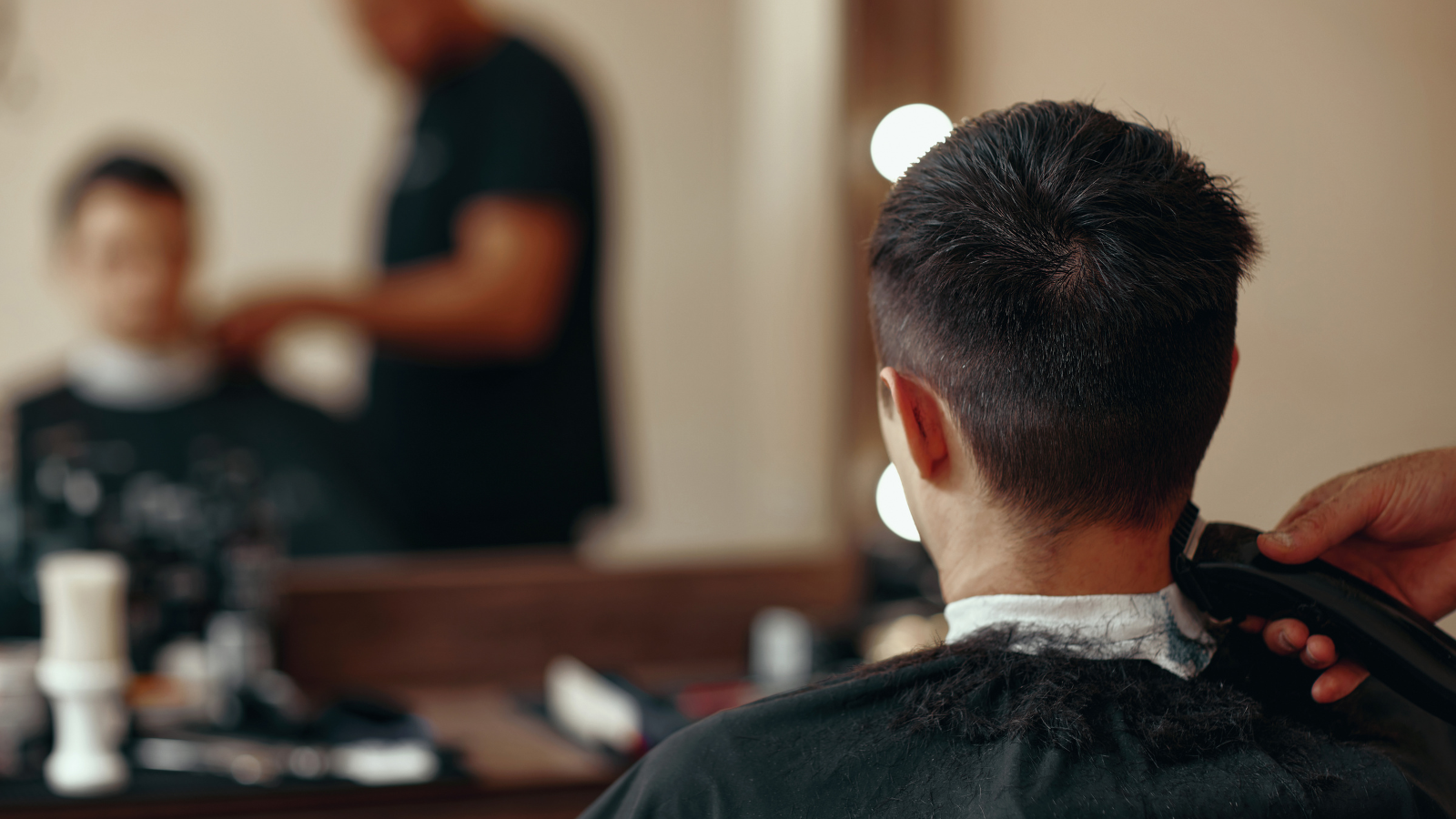Battering the boy won’t make a better man
People ask why I initiated the International Day for the Elimination of Violence Against Men and Boys (IDEVAMB) on 31st January. I wanted Trinidadians and wider Caribbean society to appreciate the need to protect our boys. I wanted others to understand that boys become traumatised when they are abused and that it is often difficult to heal these wounds. I decided to highlight men who did not use violence to exact discipline. But it was a herculean task.
It can difficult to distinguish between cruelty, punishment and discipline. All three are entangled in the web of violence. In 2018, I decided to find solutions and implement strategies to end violence against males to highlight their challenges and to give a voice to those who were suffering in silence.
“The Kalinago […] had a ceremony in which the boy was scratched by an animal tooth and pepper rubbed on the wound. He was not supposed to show pain, and this would signify such masculine traits bravery and courage.”
Scholars as James R. Liddle, Todd K. Shackelford, and Viviana A. Weekes-Shackelford in their paper Evolutionary Perspectives on Violence, Homicide, and War have utilized evolutionary theory to better understand the display of violence by human beings and also animals. Scientists and anthropologists have debated as to the extent in which violence is a cultural phenomenon, or whether humans been biologically designed for violence. Almost a decade ago, the findings of biologist David Carrier and physician Michael H. Morgan of the United States, strongly suggest that violence was part of human evolution.
Indeed, violence was common among prehistoric societies to protect villages and defend themselves from attacks. In the Caribbean, some indigenous groups had initiation rituals for boys in the journey to manhood. The Kalinago, (Island Caribs or Caribs) had a ceremony in which the boy was scratched by an animal tooth and pepper rubbed on the wound. He was not supposed to show pain, and this would signify such masculine traits bravery and courage.
“It seems contradictory that violence is often used to end violence. The boy who is whipped, beaten or bullied to be studious, disciplined, or well-mannered will most likely mature into a dysfunctional adult who will also commit violence because he sees it as normal and natural.”
In the 21st century many boys are physically and emotionally abused in homes and schools. Parents and teachers often use violence to create discipline. Many parents are ignorant or unaware of their role and responsibility, hence the reason for the intervention of governments, lawyers and social workers to protect these innocent boys. Likewise, guards use violence as a form of punishment for incarcerated persons. This violence only creates temporary obedience and stability. Violence is regularly used to empower, intimidate, control, and destroy.
It is difficult to end the cycle of violence. It seems contradictory that violence is often used to end violence. The boy who is whipped, beaten or bullied to be studious, disciplined, or well-mannered will most likely mature into a dysfunctional adult who will also commit violence because he sees it as normal and natural. And, unfortunately, it is these dysfunctional adults who are more prone to mental health issues.
“During the 1980s, in the Caribbean, it was an accepted fact that most male school children were flogged or beaten to be disciplined. The beatings were done with branches from fruit trees, fan belts from cars, terrazzo strips, wooden rulers and sticks.”
During the 1980s, in the Caribbean, it was an accepted fact that most male school children were flogged or beaten to be disciplined. The beatings were done with branches from fruit trees, fan belts from cars, terrazzo strips, wooden rulers and sticks. This punishment is what my friends and I remember of our inhumane primary school days at a denominational primary school in central Trinidad in the Caribbean. So much for the happy years of childhood! Later, at a prestigious all-boys Roman Catholic secondary school, discipline was instilled by brute force. The Dean of Discipline was not the only person responsible for this. My classmates and I were routinely slapped, pinched, punched and kicked by some teachers and the principal. The more disobedient boys would be whipped and faced suspension. This, coupled with a daily diet of insults and humiliation, traumatised the young men who were supposed to develop into rational, holistic, law-abiding men.
My friends were constantly bombarded by negativity, peer pressure and bullying, while at home many were demeaned and condemned by older siblings and parents. Many adults felt this was a wholesome education, but failed to realise it was education delivered in a warped environment. The perpetrators of such depraved acts against innocent boys created a generation of maladaptive and unfinished men. The physical scars and bruises are gone but the trauma remained. In a vicious cycle, a few of my friends became fathers and teachers but the internalization of violence and emotional scars resulted in misfits who saw violence as the easiest and acceptable medium to earn respect and promote discipline and obedience.
Both my primary and secondary schools were recognised for their prestigious scholarships and a high percentage of successful graduates. But there was a nefarious side to this as many students were beaten and forced to excel at examinations. I felt pity for those boys who failed exams or dropped out of school. Some became suicidal and depressed. A small percentage survived and excelled because of a strong family structure at home. Others were not as lucky. This is not a problem restricted to Trinidad and Tobago is developing countries. In progressive countries as Japan and China, headlines such as The rise of youth suicide in China and Suicide rise among Japan kids blamed on stifling schools indicate that students die by suicide due to the stresses of their school work and home.
Whilst at university, during the 1990s, I genuinely wanted to help those who were marginalised and had fallen through cracks in the education system. However, I was a young historian and had no training in mediation, psychiatry, counselling, or psychology. As a young adult, I always wanted to find solutions to this abusive psychodrama that was part of the education system. However, the political status quo in Trinidad and Tobago and the rest of the Caribbean was intent on perpetuating a flawed and outdated system. I wondered about the inherent flaw of my country’s education system that we ‘inherited’ from Britain. As a former British colony, I wondered if violence was also a regular feature in the primary and secondary schools in the UK.
There are tens of thousands of young and teenaged boys in the Caribbean and Latin America who still experience gaslighting and punishment at their home, schools and neighbourhoods. These boys urgently needed assistance and were being neglected by NGOs and the government. Of course, there are cynics who wrongly believe the Caribbean and Latin American societies are patriarchal and consequently men and boys are privileged and immune to violence. The Caribbean and Latin America need a comprehensive study such as the Harry’s Masculinity Report that examined British masculinity in 2021.
Education departments and teaching professionals fail to realise it is impractical to create a customised education programme for each boy. But, teachers and parents need to be mindful of the varying coping mechanisms and mental aptitudes of boys. While collaborating with social workers and activists, I learnt of the many cases in which boys with special needs, such as autism and epilepsy, were left at home due to an absence of trained teachers or lack of educational facilities. Such cases were more prevalent among boys residing in rural areas. Education systems in the Caribbean should reject one-size-fits-all models.
There is lots of research on child abuse in the Global South. One large study revealed how widespread these horrific incidents of child abuse in Latin America and the Caribbean. Unfortunately, the number or percentage of boys reported in these statistics is patchy at best. These missing statistics raise red flags. Other reports and articles often do not indicate the corrective treatment provided to the abused boys.
There are other inadequacies in the information coming from some sources, for example, the WHO’s questionable linking of masculinity to violence against women. However, local, regional and international organisations have a crucial role to create a more positive view of masculinity. International agencies need to revise their mandates because they regularly use terms as ‘sustainable goals’ or ‘ending gender-based violence’, but one wonders why violence against boys and men is omitted from these lofty goals.
“Boys must be taught how to turn their negative emotions of hate, anger and depression, as a result of violence, into a productive medium.”
NGOs dealing with boys are hesitant to address the plight of boys being victims of violence, because they fear they would be stigmatised and their funding or subvention from the government would be curtailed. Governments tend to be reactive rather than proactive, and thus do not implement preventative measures to ensure boys and men are safe from sexual, emotional, verbal and physical violence.
A history of violence has effects that cannot be easily reversed. Governments should stop overlooking the importance of creating safe environments for boys and men. In the Caribbean and Latin America there is a need to identify at-risk boys and rescue them from violent spaces.
Boys must be taught how to turn their negative emotions of hate, anger and depression, as a result of violence, into a productive medium. If given sufficient support and encouragement, at-risk boys will make worthwhile contributions to society. However, the pandemic has made many more men and boys vulnerable to a multitude of negative forces. Boys who are victims of violence and abuse are at increased risk of becoming emotionally incompetent and unable to adequately interact with others. Some will attempt to erase the debilitating memories by turning to addictive drugs such as alcohol, which is recognized more these days as a coping mechanism.
I am hoping that every year there would be solutions on the International Day for the Elimination of Violence Against Men and Boys that would end the curse of violence. We need to put aside differences and come together to help boys and men who are violent or victims of violence and struggling to heal.
Scroll down to join the discussion
Disclaimer: This article is for information purposes only and is not a substitute for therapy, legal advice, or other professional opinion. Never disregard such advice because of this article or anything else you have read from the Centre for Male Psychology. The views expressed here do not necessarily reflect those of, or are endorsed by, The Centre for Male Psychology, and we cannot be held responsible for these views. Read our full disclaimer here.
Like our articles?
Click here to subscribe to our FREE newsletter and be first
to hear about news, events, and publications.
Have you got something to say?
Check out our submissions page to find out how to write for us.
.















































